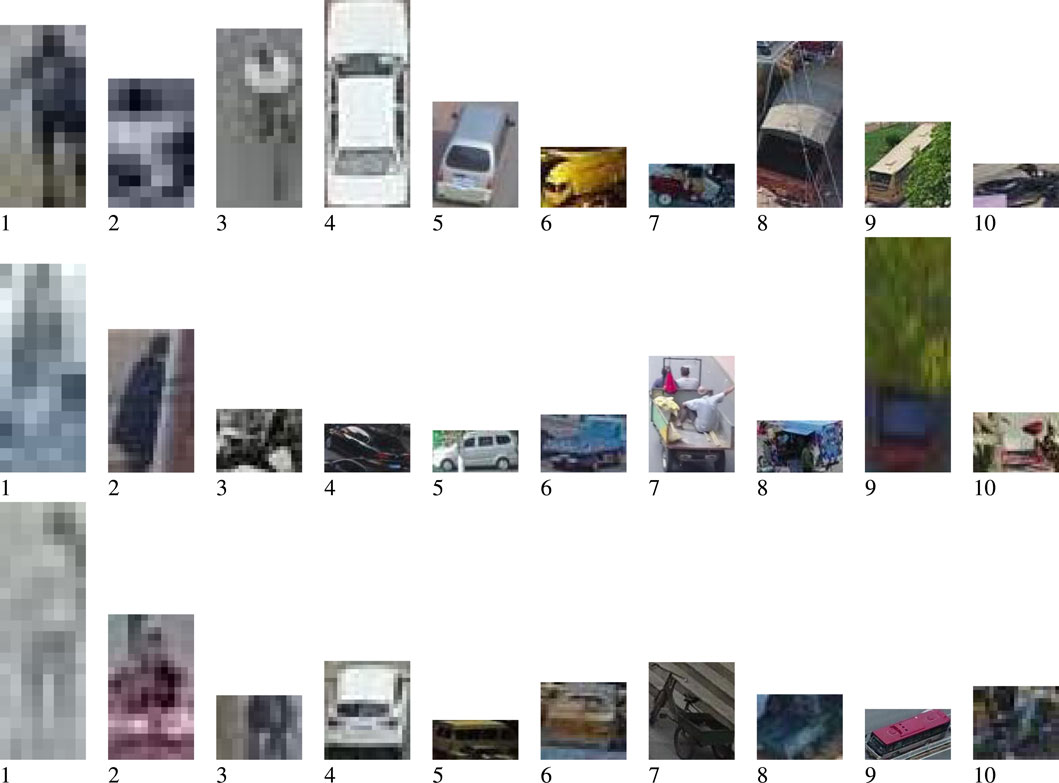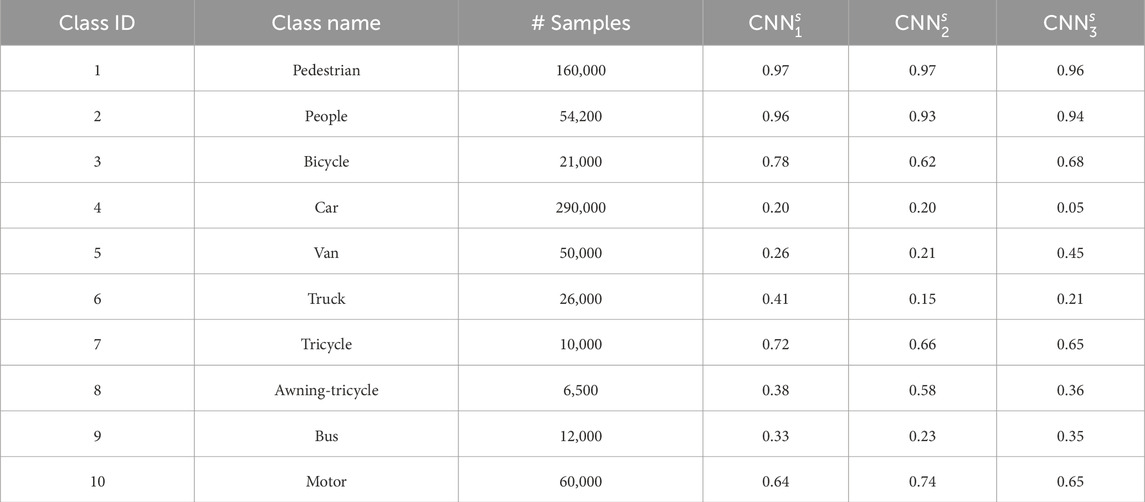- 1Department of Computer Science, Institute of Engineering and Technology, Korkyt Ata Kyzylorda University, Kyzylorda, Kazakhstan
- 2Department of Computer and Network Engineering, Graduate School of Information Sciences, Hiroshima City University, Hiroshima, Japan
- 3Federal Research Center Computer Science and Control of the Russian Academy of Sciences (FSI), Moscow, Russia
- 4Applied Informatics and Intelligent Systems in Human Sciences Department, RUDN University, Moscow, Russia
The widespread and growing use of flying unmanned aerial vehicles (UAVs) is attributed to their high spatial mobility, autonomous control, and lower cost compared to usual manned flying vehicles. Applications, such as surveying, searching, or scanning the environment with application-specific sensors, have made extensive use of UAVs in fields like agriculture, geography, forestry, and biology. However, due to the large number of applications and types of UAVs, limited power has to be taken into account when designing task-specific software for a target UAV. In particular, the power constraints of smaller UAVs will generally necessitate reducing power consumption by limiting functionality, decreasing their movement radius, or increasing their level of autonomy. Reducing the overhead of control and decision-making software onboard is one approach to increasing the autonomy of UAVs. Specifically, we can make the onboard control software more efficient and focused on specific tasks, which means it will need less computing power than a general-purpose algorithm. In this work, we focus on reducing the size of the computer vision object classification algorithm. We define different tasks by specifying which objects the UAV must recognize, and we construct a convolutional neural network (CNN) for each specific classification. However, rather than creating a custom CNN that requires its dataset, we begin with a pre-trained general-purpose classifier. We then choose specific groups of objects to recognize, and by using response-based pruning (RBP), we simplify the general-purpose CNN to fit our specific needs. We evaluate the pruned models in various scenarios. The results indicate that the evaluated task-specific pruning can reduce the size of the neural model and increase the accuracy of the classification tasks. For small UAVs intended for tasks with reduced visual content, the proposed method solves both the size reduction and individual model training problems.
1 Introduction
In many areas, the rapid growth of drone use and applications directly correlates with an increase in onboard processing power. This is due to the increased autonomy it provides. However, due to increasing demands for various unmanned aerial vehicle (UAV) tasks and power consumption (Abeywickrama et al., 2018; Jin et al., 2023), many of the processes required for autonomous flight and mission success must be performed off-board. For instance, advanced computer vision, reasoning, flight control, and unexpected situation-solving can be performed off-board on a powerful computer or in the cloud, and control signals can be transmitted to the UAV. This means that the UAV collects, compresses, and sends data to the operator, who makes the decision. Although this is the most natural approach, it requires reliable real-time updates from the drone sensors to the controller. This need for reliable and stable transmission can place significant stress on power-saving measures (Pinheiro et al., 2019) since the transmitter’s power is limited and signals can be lost. Automation of many drone functions can reduce power consumption, provided the task operates at a power level lower than that required for data transmission to off-board processing. For instance, small drones could execute simple computer vision tasks, such as object classification, onboard. However, the hardware limitations of onboard processors often necessitate the reduction, optimization, and adaptation of most onboard tasks. The capacity of the different hardware platforms varies depending on the UAV model, its power supply, and its intended use. Generally, as the desired functionality becomes more complex, we need to optimize the algorithms more or use a more powerful onboard hardware platform. A comparison was made by Pinheiro et al. (2019), where the authors compared off- and onboard processing for path planning. They concluded that, eventually, onboard processing is required due to transmission problems and delays. Therefore, algorithm compression is essential for compatibility with the onboard hardware and for increasing the autonomy of individual UAVs.
Currently, a large number of methods for input–output processing, decision-making, and UAV control are performed using artificial neural networks (ANNs), such as convolutional neural networks (CNNs), for instance. There are several advantages to using the neural-based approach in certain processing parts of the UAV. For instance, CNNs are highly training-dependent, learning-based tools that excel at handling noisy data. This advantage is especially important when considering that UAVs must make decisions in very noisy real-world environments. CNNs, which have been highly successful at separating noise from the content (Goodfellow et al., 2016), appear to be an efficient method when sufficient training data are available. As a result, in the past few years, UAVs and related fields have increasingly used CNNs for vision processing due to their exceptional ability to extract information from real-world data. Some examples of work include processing UVA-captured images, such as Othman and Aydin (2023), Meng et al. (2023), Osco et al. (2020), and Wijnker et al. (2021).
When it comes to optimization, ANNs have been studied to find new methods for reducing their size because large models can have billions of parameters (Brown et al., 2020). A lot of work has been carried out to minimize, reduce, and improve neural networks (Suzuki et al., 2018; Iandola et al., 2016a; Howard et al., 2017; Shimoda et al., 2017; Abdiyeva et al., 2020). Size reduction techniques have also been used to make the reduced algorithm perform better for certain tasks or the representation less sparse in general (Abdiyeva et al., 2021a). For our purposesr-reducing ANNs size for UAV hardware and tasks-we can divide size reduction and optimization of ANNs, in general, into two distinct approaches.
We refer to the first approach as the hardware-for-autonomy approach. The purpose of this approach is to reduce or optimize a given ANN/CNN to specific hardware requirements or limitations. Consequently, these methods employ various low-power hardware schemes to reduce overall power consumption. The reduction is achieved by either creating new hardware platforms that lower the total amount of power used (Li et al., 2022; Xu et al., 2021; Lamberti et al., 2022) or by suggesting operation templates with lower power consumption (Czachórski et al., 2022). Additionally, a broader research area dedicates itself to UAV computation. For instance, Paredes-Vallés et al. (2024) developed a fully neuromorphic chip for an onboard drone. Mohan et al. (2021) recently proposed a mountable framework using Jetson Nano and observed a
The second approach aims to reduce the code’s cost, size, or other attributes within a specific hardware framework or limits. These approaches include algorithm optimization, protocol optimization, and reducing the size of control messages. For instance, creating onboard CNNs for various visual tasks involves significant effort in training compact and energy-efficient neural networks (Othman and Aydin, 2023; Silva et al., 2020; Albanese et al., 2022). Some other projects focus on processing UAV-collected data (Meng et al., 2023; Wijnker et al., 2021) or building small, portable networks to detect drones by separating their unique sounds from background noise (Aydın and Kızılay, 2022).
The methods for the size reduction of ANNs/CNNs can, in turn, be separated into compression (quantization), precision reduction, and structural pruning.
Quantization refers to methods, like those described by Bagherinezhad et al. (2016) and Abdiyeva et al. (2018), that reduce the size of the network by storing the network parameters less accurately. For instance, Abdiyeva et al. (2018) stored all the weights in a look-up table quantized into bins. The weight retrieval process returns approximate values.
Precision reduction removes, merges, or changes CNN filters (Goyal et al., 2021; Courbariaux and Bengio, 2016. Courbariaux and Bengio (2016) binarized the network’s weights and activation functions while maintaining reasonable accuracy. Goyal et al. (2021) showed that fixed-point weight representation is possible with almost no loss of accuracy.
Finally, pruning represents a set of methods that remove certain filters or neurons from the network (Goodfellow et al., 2016). There are many approaches to removing parts of the network to reduce its size while preserving as much of the original performance as possible (Iandola et al., 2016a; Li et al., 2016; Anwar et al., 2015). For example, Iandola et al. (2016a) removed certain filters basedon their values, while Abdiyeva et al. (2021b) removed filters based on their average activation values. An intriguing result was that the authors showed that after pruning a CNN trained for object recognition, the recognition accuracy of certain classes decreased, while for others, it increased.
In this work, we expand on this finding in the context of size reduction and task specialization. We study how to reduce the size of CNNs by focusing on tailoring a neural model to UAV-specific visual tasks.
We consider the following schema. Let
We consider image classification of objects obtained from an onboard camera. Each classification target is considered a task
To evaluate our methodology, we use the VisDrone dataset (Zhu et al., 2021). This dataset offers several tasks specifically designed for drone performance. Our research focuses on object detection and the single-object tracking challenge. For each of the datasets, we will use a pre-trained model and prune it using RBP. We directly evaluate the pruned model under various pruning parameters and compare its accuracy with the baseline accuracy offered by other state-of-the-art models. Note that we do not provide a comparative evaluation of other methodologies because, to the bestof the author’s knowledge, no other study has applied CNN pruning for context-specific size reduction. Generally, researchers use pruning as a general size reduction approach without studying an object- or class-specific size reduction. Therefore, we compare various levels of pruning as a more objective evaluation.
A summary of this work’s primary contributions:
2 Previous work
The use of CNNs or ANNs in UAVs and related applications is extensive. Researchers have explored applications, optimization, size reduction, and cost optimization in various ways and for different purposes. In this study, we mainly overview three different sets of works related to UAVs. First, we outline the applications for which ANNs are being used in UAVs; second, we outline the purpose of off-board and onboard task development; and finally, we also outline the optimization of neural networks for UAV-related tasks.
Recently, the integration of image processing and computer vision with neural networks has enhanced the capabilities of UAVs significantly. For instance, Choi et al. (2021) used a neural approach for path planning in stair climbing, while Li et al. (2023) used a neural networkfor path planning in UAV highway inspection. Direct image processing was performed by specialized CNN models, such as in Xiao (2023), Dai et al. (2020), and Wang et al. (2018). For instance, Othman and Aydin (2023) developed a low-power-specific CNN for human behavior recognition. Meng et al. (2023) developed a specific CNN for detecting small objects from the VisDrone dataset by optimizing the YOLOv7 architecture. In addition to vision, flight control has been examined in some situations, and path planning for UAVs has been researched using neural models. In the same way, CNNs have been used to identify special UAV states that enable more reliable and autonomous flight (Yang et al., 2023).
A large portion of the use of CNNs for UAVs is focused on off-board processing with the primary goal of achieving the target problem (Osco et al., 2020; Wijnker et al., 2021). More recently, several reduced-size CNNs have been developed, such as TinyNet (Dong et al., 2022), MobileNet (Howard et al., 2017), and SqueezeNet (Iandola et al., 2016b), allowing the same results to be evaluated under the hardware limitations of either platform, such as Jetson Nano TX2 or FPGA accelerators (Xu et al., 2021).
Finally, the general area of optimization includes a large amount of work that focuses on either encoding reduction (compression) or pruning (size reduction). Early examples of compression are, for instance, BinaryConnect, where the authors introduced a CNN with binary weights, or the XORNet (Rastegari et al., 2016). More recently, these reduced networks have been implemented on FPGAs (Shimoda et al., 2017) for power reduction. Abdiyeva et al. (2020) investigated a full binary CNN for general-purpose image processing. The pruning approach focuses on structurally reducing the size of the network by removing some of its components. Pruning has been viewed as a general methodto reduce the size of CNNs (Anwar et al., 2015) or make processing less expensive (Ma et al., 2019).
However, the overall performance of the network is the primary focus of all optimization methods. It is not known to the authors whether pruning has been used in a task-specific manner for improving the task’s efficiency and result accuracy.
3 Methodology
Generally, the need for CNN reduction stems from hardware limitations like Jetson Nano TX2, an embedded GPU accelerator. However, in this work, we emphasize that optimizing a control model for a specific context also reduces the size of the computational model. Therefore, we can view the proposed method as a second stage of a pipeline, where we first optimize a given model for the hardware and then further optimize the same model for a specific task.
The proposed method uses a pruning approach to specifically reduce a CNN for a target classification. The overall schematic of the proposed method is shown in Figure 1.

Figure 1. Schematic representation of the methodology for reducing a pre-trained CNN to a task-specific, smaller model.
The method starts by taking a pre-trained CNN or training a new CNN from scratch. This CNN represents the space of all possible classification tasks
3.1 RBP
The reduction in the size of the control networks is studied in this section using RBP (Abdiyeva et al., 2021a; Lukac and Abdiyeva, 2023). RBP is a method of pruning neural networks.
Let
Furthermore, let a subset of filters for a given CNN layer
To calculate the output tensor
where
Let
Finally, we denote by
Accumulated response (
where
Let
3.2 Network evaluation
In practice, RBP is implemented by accumulating the filter responses for a whole class of objects. This is obtained by propagating the dataset
The accuracy of a network
where
To quantify the changes in the average accuracy of the evaluated models, we define the accuracy difference
Note that in Equation 4, one can change the dataset to, for instance,
The reduction in the CNN size impacts the accuracy of the target task (Molchanov et al., 2016). For instance, in the case of visual classification, the average accuracy for a
This means that when pruning a CNN in a multi-classification or recognition environment, making the network smaller can improve the accuracy of certain classes while ignoring other classes.
From a practical point of view, this means that one needs to determine whether the pruning of the already minimized networks can be used as a method of algorithm selection using a per-task configuration by pruning.
4 Experimental settings
4.1 Dataset
In this work, we use the following datasets: VisDrone (Zhu et al., 2021). The dataset contains five different tasks, namely, object detection in images, object detection in videos, single-object tracking, multi-object tracking, and, finally, crowd counting. The VisDrone dataset provides various tasks for up to 10 different object classes. Specifically, detection and tracking can be performed for the class labels and their corresponding class IDs, as shown in Table 1.

Table 1. Dataset description showing the class name, class id and the number of samples in each class.
The first column of Table 1 shows the class name, the second column shows the class ID, and the last column shows the number of data samples available for each class.
As observed, the training dataset is unbalanced. Furthermore, the dataset incorporates a class label for ignored regions, facilitating the training of detectors to avoid specific regions.
In the object classification task, we use all the
1. For each sample image
2. Each object
3. The new dataset
4. The image set
4.2 Network models
We evaluate three types of convolutional neural networks. The first CNN is the simplest one. It contains only three convolutional layers, each followed by a batch normalization layer. We refer to this CNN as
The first column in Table 2 shows the name of the model. The second column shows the configuration of the convolutional layers in
The experiments are conducted according to the schematic shown in Figure 2. For each
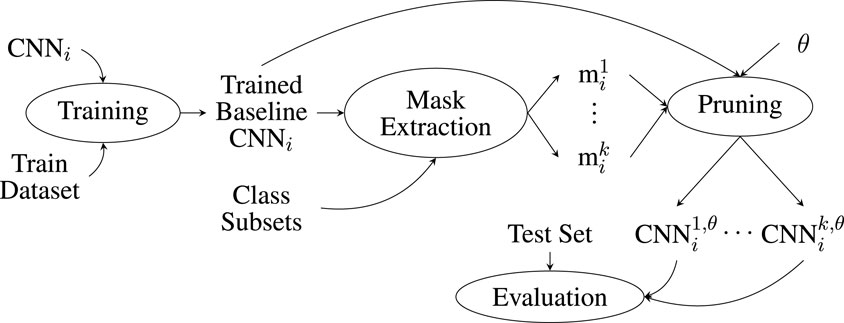
Figure 2. Schematic representation of the experimental steps when applying the RBP methodology used in this paper.
5 Experiments and results
5.1 Full network training
The accuracy of all three networks is shown in Table 3 as average accuracy over the set of all 10 classes.
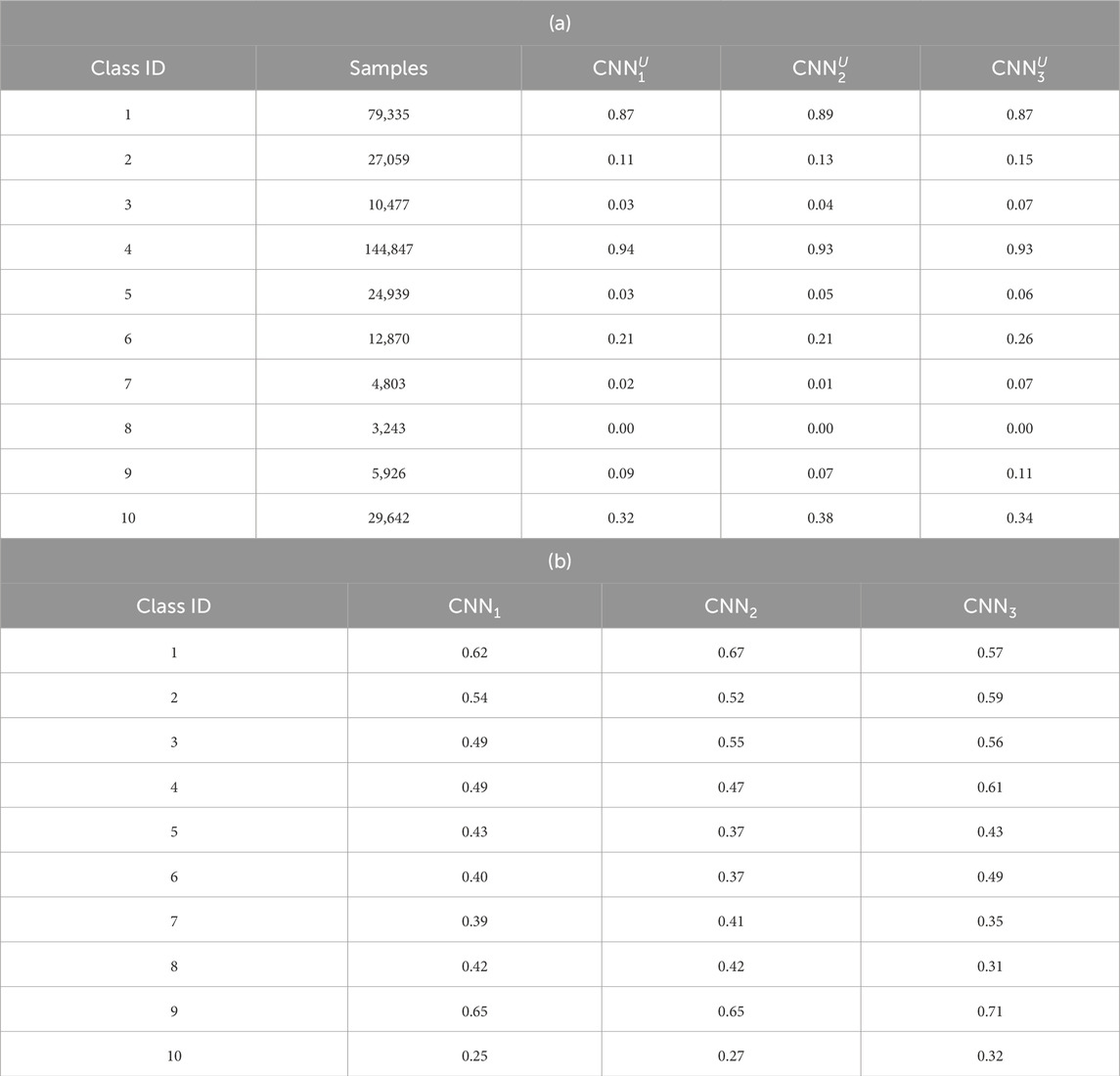
Table 3. Results of evaluation of the model CNNs trained on (a) unbalanced and (b) balanced training data.
Table 3a shows the result of training the networks on the data extracted from the original dataset without any post-processing. The first column in both Tables 3a,b shows the class ID, the second column in Table 3a shows the number of training samples for the unbalanced dataset, and the three last columns in both tables show the accuracy of the evaluation dataset for each of the respective three CNN models.
In Table 3a, the obtained data are highly unbalanced, and thus, the models trained on these data are referred to as
Table 3b shows the same networks but trained on balanced data. The balanced dataset was obtained by oversampling all the classes to the number of samples given by the class car (4), and the total resulting number of samples is 1,448,470. The results of balanced training show much more homogeneous results with all classes having a classification accuracy larger than 0.25. It is observed that using the balanced data for training resulted in all three networks having very similar performance on average. We refer to the networks trained on the multi-class dataset as
For understanding the accuracy of the networks in Table 3, Figure 3 shows samples of each of the 10 classes of the data. It is important to note that we extracted the data specifically for object detection. We resized all the data, which can lead to significant object distortion. In addition, as shown in Figure 3, the objects are of entirely unique quality, and thus, the resulting initial performance corresponds to the dataset.
Although multi-class
5.2 Single-class network training at full accuracy
To obtain a deeper understanding of how these three networks can actually learn the classification tasks from the given dataset, we trained each of the CNNs for single object classification, one at a time. To distinguish between the multi-class trained models and the binary classifiers, we refer to the binary classifiers as
To train the binary classifiers, we created 10 different datasets (one for each target class). The size of each dataset is twice the number of samples in the target class, which is shown in the second column of Table 4. The negative label (not the target class) was randomly sampled from the remaining datasets. There were three convolutional networks trained to classify single objects. The results of their tests are shown in Table 4.
As anticipated, the accuracy of the binary classifiers trained for individual classes surpasses that of the networks trained for multi-class classification. This is an expected outcome as the binary classification is simpler (binary classification vs multi-class classification). In addition, for multi-class learning, the data might not be large enough. Even when oversampling is used to create a balanced dataset, the resulting dataset might not be large enough. Finally, according to the results, the network is large enough to learn a high-accuracy binary task, while for multi-class learning, a larger network could be used. For instance, assume that the verification accuracy for class pedestrian or people is over 0.95 for both classes (Table 4). This value would indicate that the network is large enough for this binary classification, but this result is not observed for all classes; thus, the size of the network is not the only parameter that would distinguish the single classifier from the multiple-class classifiers. In addition, assume that there are some outliers. In particular, Figure 4 shows the accuracy as a function of training data size. Generally, we expect classes with more samples to have higher accuracy, but when we prune a single class, dependency becomes less precise.
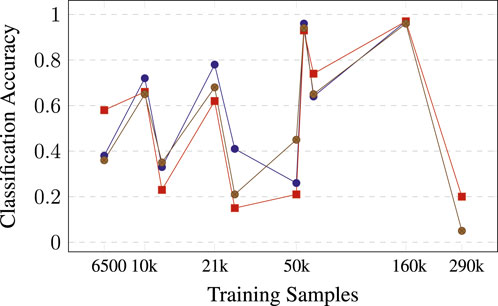
Figure 4. Accuracy of pruned single-class classifiers as a function of the size of the training dataset.
Furthermore, note that the multi-class CNNs are able to provide an improvement over the single-class classifiers only in specific cases. The accuracy of single-class networks is lower for certain classes compared to networks trained on unbalanced data and lower for other classes compared to networks trained on balanced data. In particular, classes truck (6), awning-tricycle (8), and bus (9) are much better recognized by the network trained on balanced data, while they are almost not recognized at all when the same network is trained on unbalanced data. The most probable reason for this result is that training it on a multi-class dataset allows it to better organize the feature space.
5.3 Pruning full network
5.3.1 Networks trained on the balanced dataset
Pruning was performed over the set of pruning ratios specified by
The pruning of CNNs was performed by removing
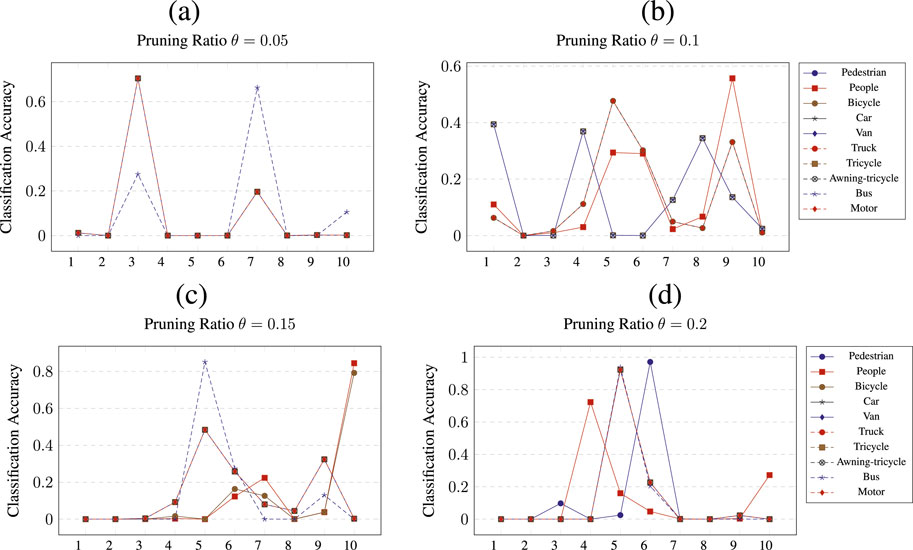
Figure 5. Class wise pruning of the
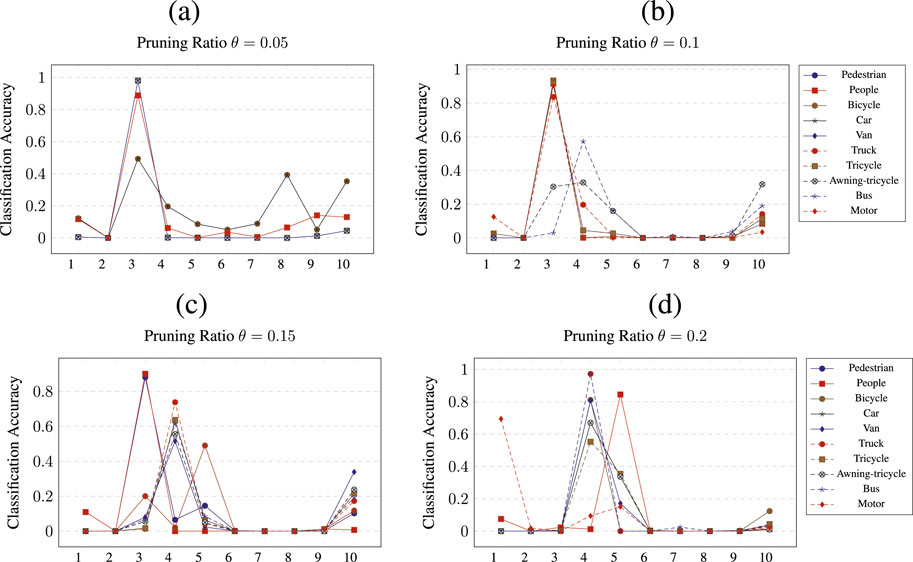
Figure 6. Class wise pruning of the
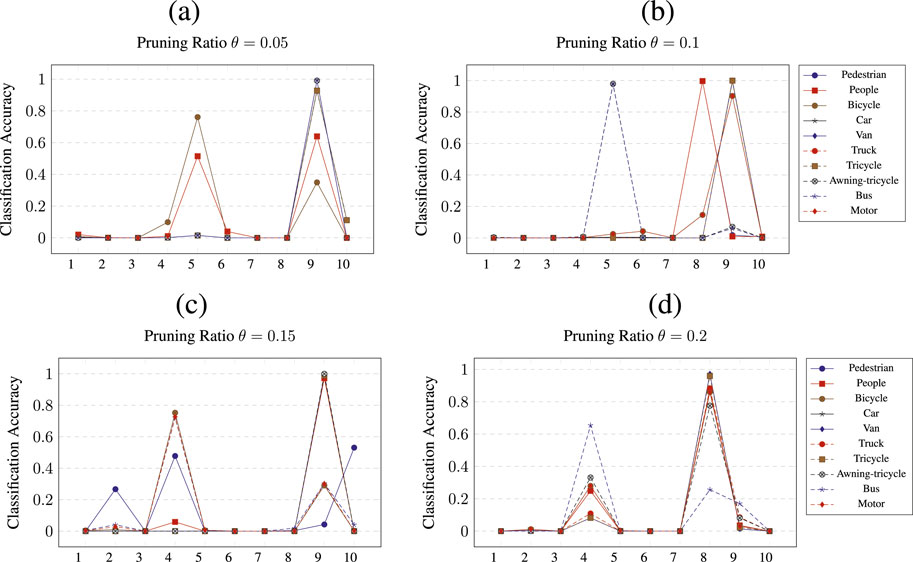
Figure 7. Class wise pruning of the
Figure 5 shows the results of pruning
Figure 6 shows the pruning results for all ratios
Figure 7 shows the pruning results of
It is observed that the results show two types of patterns. First, pruning generates a complete collapse of the classification of certain classes. This result can be observed across all pruning results, such as in Figure 5A, for classes such as van (5) or bus (9). The second type of result shows that for a given pruning ratio
Next, it is observed that for the
For network
For network
5.3.2 Networks trained on the unbalanced dataset
Similar to the models trained on balanced data, we also performed network pruning on CNNs trained in Section 5.1 on the unbalanced datasets, and we pruned them for one class at a time. Pruning was again performed over the set of pruning ratios specified by
Figure 8 shows the results of pruning
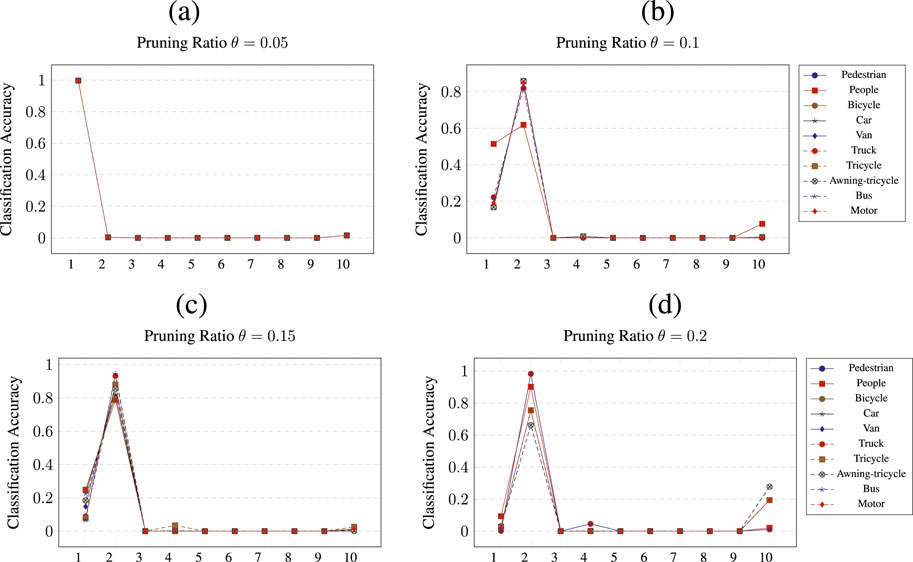
Figure 8. Class wise pruning of the
A similar result can be observed when pruning the
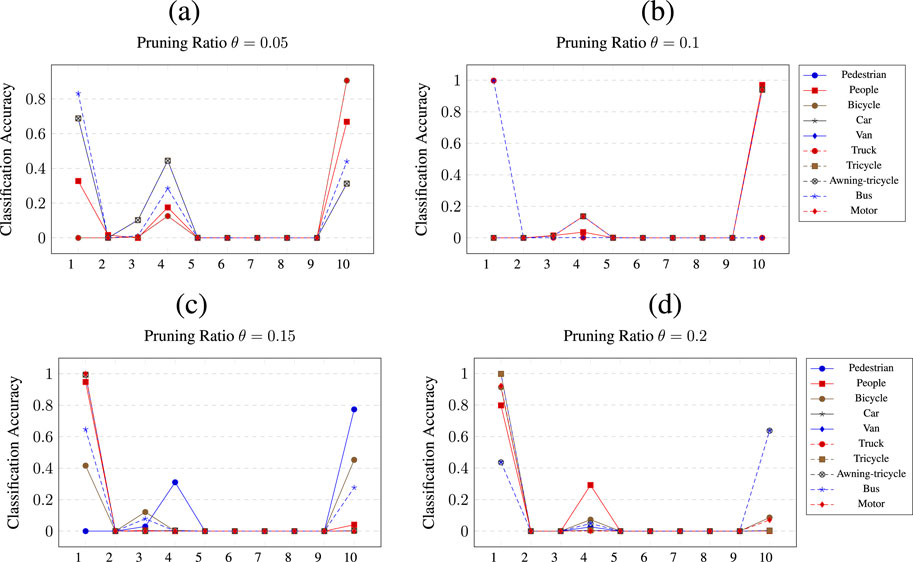
Figure 9. Class wise pruning of the
A similar picture is shown by the pruning of
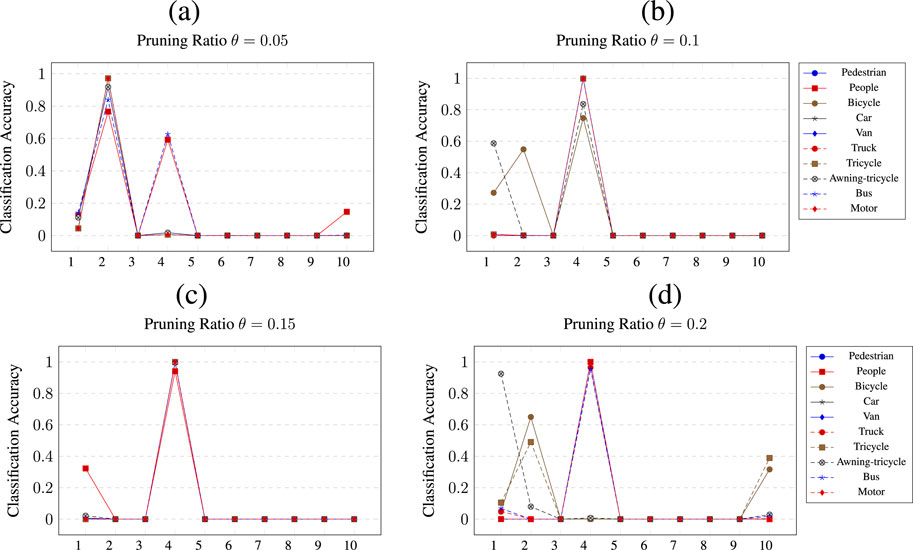
Figure 10. Class wise pruning of the
6 Result discussion
By examining the evolution of class accuracy as a function of pruning and pruning masks, we can compare the results across different networks. These results are intriguing because of the following observations.
First, the three networks encode the same learned information differently. For instance, for the pruning ratio
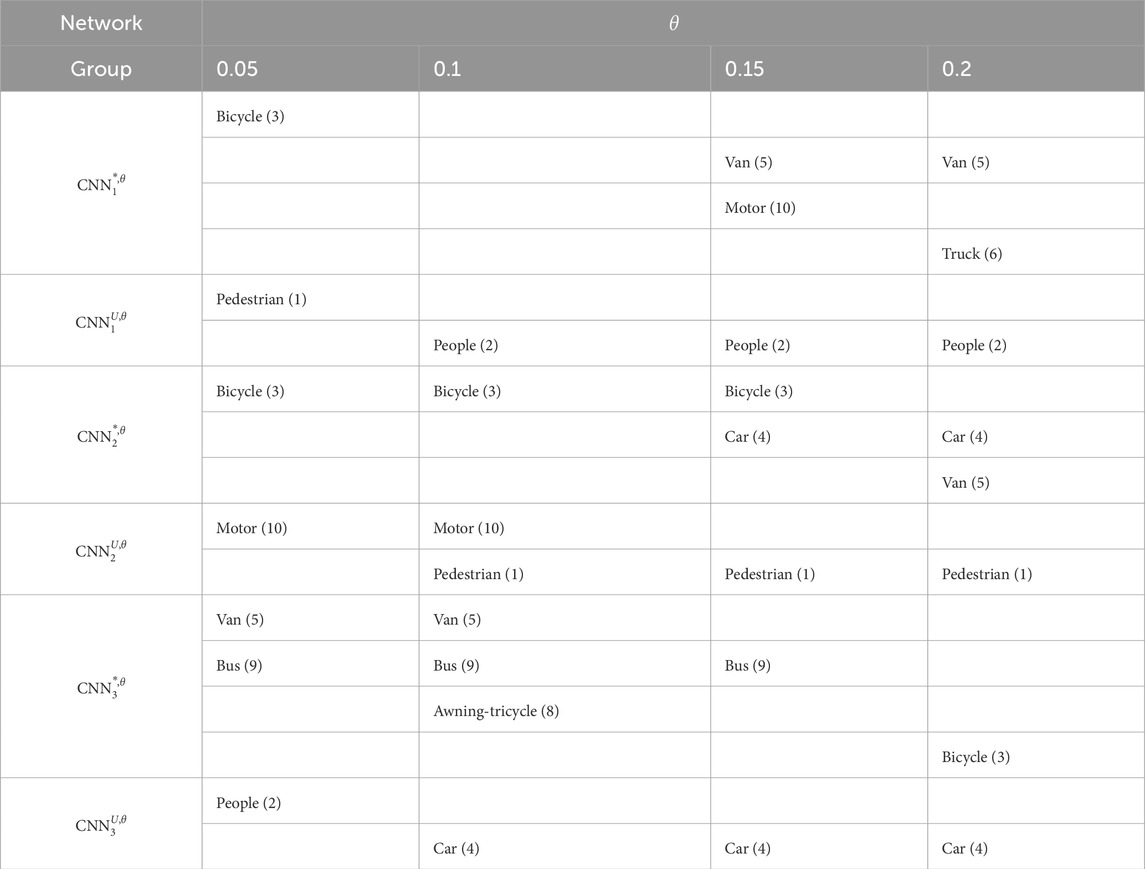
Table 5. Summary of the classes for which the accuracy improved after RBP with respect to the original unpruned network.
As observed, 5 out of 10 classes were improved by pruning at various stages in networks trained on balanced data, while 4 classes showed improvement when pruning networks trained on unbalanced data. However, the representation of the information is different because not all networks prune for all five classes. No network prunes for all five classes. All networks trained on the balanced data, however, improve the bicycle and van classes. Finally, all networks trained on unbalanced data only improved classes that were represented by a larger number of training samples.
Second, not all networks
Third, we partially achieved the original goal of distilling smaller CNNs from larger CNNs for specific subtasks. An important result here is the observation that when pruning for a specific class, the improvement is not directly predictable: in other words, pruning for a class
Fourth, the results point to various degrees of possible overfitting. When removing filters from one class improves the classification accuracy of another class by more than 95% (such as in Figures 6A, 7B, 10), it means that the network can no longer generalize effectively over the initial set of classes. Instead, only a subset of specific filters is now working. It is intriguing to note that high accuracy was found on the evaluation dataset for both
According to studies on class representation in CNNs (Abdiyeva et al., 2021a; Lukac and Abdiyeva, 2023), classes with similar visual features occupy nearby locations in the feature space. Pruning as a tool for removing certain features can have multiple direct effects. First, it can, as expected, remove some features and thus effectively destroy the network’s ability to recognize certain classes. Second, removing some features frees up the feature space for other features to become more prominent. Third, removing certain features allows interactions with other features to be amplified, so even classes not related to individual features can be suddenly recognized with higher accuracy. Thus, the classes with classification accuracy increases of more than 95% may be partly due to the same filters that made the pruned class perform best. However, “infecting backgrounds” can also contribute to improved classification. An object of class A can often lead to a mistaken classification when it appears with a background of class B in visual inputs. So, a high level of classification accuracy could come from both recognizing class A features and the co-occurrence statistics that come with class B features. Together, these statistics lead to a higher probability of classification.
In practice, this could imply that the networks could be potentially compressed even more. Although we consider pruning a size reduction technique in this study, it was not implemented as such. For that, the filters would have to be totally removed from the network, which is possible and would entail the expected size reduction. Considering further development, the results of pruning and isolating filters for individual or groups of classes provide a roadmap for designing optimal object classifiers or feature extractors. In addition, understanding which filters are important to a given class and identifying the interfering background are also helpful in determining the optimal size of classifiers.
Finally, the fact that only certain classes are improved by pruning can also be observed from the point of view of pruned filters, i.e., pruned masks. Examining the overlap of the masks for different classes at different
7 Conclusion
In this paper, we show the application of neural network pruning as a method for generating neural networks for selective classification. The proposed method for generating specialized CNNs from a large-scale CNN showed promise for certain classes of objects. In addition, the class-wise RBP showed that, while being exclusive, it also positively affects other classes. We can see this as a side effect of the de-cluttering of the feature space where individual object classes are located.
Data availability statement
Publicly available datasets were analyzed in this study. These data can be found at: https://github.com/VisDrone/VisDrone-Dataset.
Author contributions
NK: Funding acquisition, Resources, Writing – review and editing. ML: Conceptualization, Data curation, Formal analysis, Funding acquisition, Investigation, Methodology, Project administration, Resources, Software, Supervision, Validation, Visualization, Writing – original draft. SI: Investigation, Writing – review and editing. AD: Conceptualization, Formal analysis, Writing – review and editing. ES: Data curation, Validation, Writing – review and editing. AG: Data curation, Writing – review and editing.
Funding
The author(s) declare that financial support was received for the research and/or publication of this article. This research was funded by the Science Committee of the Ministry of Science and Higher Education of the Republic of Kazakhstan (grant no. AP25796743).
Acknowledgments
ML would like to thank Kamila Abdiyeva for discussions related to the interpretation and polish of the results and pruning models.
Conflict of interest
The authors declare that the research was conducted in the absence of any commercial or financial relationships that could be construed as a potential conflict of interest.
Generative AI statement
The author(s) declare that no Generative AI was used in the creation of this manuscript.
Publisher’s note
All claims expressed in this article are solely those of the authors and do not necessarily represent those of their affiliated organizations, or those of the publisher, the editors and the reviewers. Any product that may be evaluated in this article, or claim that may be made by its manufacturer, is not guaranteed or endorsed by the publisher.
References
Abdiyeva, K., Lukac, M., and Ahuja, N. (2021a). “Remove to improve?,” in Pattern recognition. ICPR international workshops and challenges: virtual event, january 10–15, 2021, proceedings, Part III (Berlin, Heidelberg: Springer-Verlag), 146–161. doi:10.1007/978-3-030-68796-0_11
Abdiyeva, K., Lukac, M., and Ahuja, N. (2021b). “Remove to improve?,” in Pattern recognition. ICPR international workshops and challenges. Editors A. Del Bimbo, R. Cucchiara, S. Sclaroff, G. M. Farinella, T. Mei, and M. Bertini (Cham: Springer International Publishing), 146–161.
Abdiyeva, K., Tibeyev, T., and Lukac, M. (2020). “Capacity limits of fully binary cnn,” in 2020 IEEE 50th international symposium on multiple-valued logic (ISMVL), 206–211. doi:10.1109/ISMVL49045.2020.000-4
Abdiyeva, K., Yap, K.-H., Gang, W., Ahuja, N., and Lukac, M. (2018). “Ql-net: quantized-by-lookup cnn,” in 2018 15th International Conference on Control, Automation, Robotics and Vision (ICARCV), Singapore, 18-21 November 2018, 413–418. doi:10.1109/ICARCV.2018.8581119
Abeywickrama, H. V., Jayawickrama, B. A., He, Y., and Dutkiewicz, E. (2018). “Empirical power consumption model for uavs,” in 2018 IEEE 88th Vehicular Technology Conference (VTC-Fall), Chicago, IL, USA, 27-30 August 2018, 1–5. doi:10.1109/VTCFall.2018.8690666
Albanese, A., Nardello, M., and Brunelli, D. (2022). Low-power deep learning edge computing platform for resource constrained lightweight compact uavs. Sustain. Comput. Inf. Syst. 34, 100725. doi:10.1016/j.suscom.2022.100725
Anwar, S., Hwang, K., and Sung, W. (2015). Structured pruning of deep convolutional neural networks. CoRR abs/1512.08571.
Aydın, I., and Kızılay, E. (2022). Development of a new light-weight convolutional neural network for acoustic-based amateur drone detection. Appl. Acoust. 193, 108773. doi:10.1016/j.apacoust.2022.108773
Bagherinezhad, H., Rastegari, M., and Farhadi, A. (2016). LCNN: lookup-based convolutional neural network. CoRR abs/1611.06473.
Brown, T. B., Mann, B., Ryder, N., Subbiah, M., Kaplan, J., Dhariwal, P., et al. (2020). Language models are few-shot learners. CoRR abs/2005.14165.
Chen, L., Boardley, B., Hu, P., Wang, Y., Pu, Y., Jin, X., et al. (2024). 2023 low-power computer vision challenge (lpcvc) summary.
Choi, Y. J., Rahim, T., Ramatryana, I. N. A., and Shin, S. Y. (2021). “Improved cnn-based path planning for stairs climbing in autonomous uav with lidar sensor,” in 2021 International Conference on Electronics, Information, and Communication (ICEIC), Jeju, Korea (South), 31 January 2021 - 03 February 2021, 1–7. doi:10.1109/ICEIC51217.2021.9369805
Courbariaux, M., and Bengio, Y. (2016). Binarynet: training deep neural networks with weights and activations constrained to +1 or -1. CoRR abs/1602.02830.
Czachórski, T., Gelenbe, E., Kuaban, G. S., and Marek, D. (2022). “Optimizing energy usage for an electric drone,” in Security in computer and information sciences. Editors E. Gelenbe, M. Jankovic, D. Kehagias, A. Marton, and A. Vilmos (Cham: Springer International Publishing), 61–75.
Dai, X., Mao, Y., Huang, T., Qin, N., Huang, D., and Li, Y. (2020). Automatic obstacle avoidance of quadrotor uav via cnn-based learning. Neurocomputing 402, 346–358. doi:10.1016/j.neucom.2020.04.020
Dong, W., Lv, J., Chen, G., Wang, Y., Li, H., Gao, Y., et al. (2022). “Tinynet: a lightweight, modular, and unified network architecture for the internet of things,” in Proceedings of the 20th annual international conference on mobile systems, applications and services (New York, NY, USA: Association for Computing Machinery), 248–260. doi:10.1145/3498361.3538919
Goodfellow, I. J., Bengio, Y., and Courville, A. (2016). Deep learning. Cambridge, MA, USA: MIT Press. Available online at: http://www.deeplearningbook.org.
Goyal, R., Vanschoren, J., van Acht, V., and Nijssen, S. (2021). Fixed-point quantization of convolutional neural networks for quantized inference on embedded platforms. CoRR abs/2102.02147.
Howard, A. G., Zhu, M., Chen, B., Kalenichenko, D., Wang, W., Weyand, T., et al. (2017). Mobilenets: efficient convolutional neural networks for mobile vision applications.
Iandola, F. N., Han, S., Moskewicz, M. W., Ashraf, K., Dally, W. J., and Keutzer, K. (2016a). Squeezenet: alexnet-level accuracy with 50x fewer parameters and< 0.5 mb model size. arXiv preprint arXiv:1602.07360.
Iandola, F. N., Moskewicz, M. W., Ashraf, K., Han, S., Dally, W. J., and Keutzer, K. (2016b). Squeezenet: alexnet-level accuracy with 50x fewer parameters and <1mb model size. CoRR abs/1602.07360.
Jin, H., Jin, X., Zhou, Y., Guo, P., Ren, J., Yao, J., et al. (2023). A survey of energy efficient methods for uav communication. Veh. Commun. 41, 100594. doi:10.1016/j.vehcom.2023.100594
Lamberti, L., Niculescu, V., Barciś, M., Bellone, L., Natalizio, E., Benini, L., et al. (2022). “Tiny-pulp-dronets: squeezing neural networks for faster and lighter inference on multi-tasking autonomous nano-drones,” in 2022 IEEE 4th International Conference on Artificial Intelligence Circuits and Systems (AICAS), Incheon, Korea, 13-15 June 2022, 287–290. doi:10.1109/AICAS54282.2022.9869931
Li, G., Zhang, J., Zhang, M., and Corporaal, H. (2022). “An efficient fpga implementation for real-time and low-power uav object detection,” in 2022 IEEE International Symposium on Circuits and Systems (ISCAS), Austin, TX, USA, 27 May 2022 - 01 June 2022, 1387–1391. doi:10.1109/ISCAS48785.2022.9937449
Li, H., Kadav, A., Durdanovic, I., Samet, H., and Graf, H. P. (2016). Pruning filters for efficient convnets. CoRR abs/1608.08710.
Li, Y., Gao, S., Liu, X., Zuo, P., and Li, H. (2023). An efficient path planning method for the unmanned aerial vehicle in highway inspection scenarios. Electronics 12, 4200. doi:10.3390/electronics12204200
Lukac, M., and Abdiyeva, K. (2023). Hacking DCNs. Cham: Springer Nature Switzerland, 49–59. doi:10.1007/978-3-031-40997-4_4
Ma, X., Yuan, G., Lin, S., Li, Z., Sun, H., and Wang, Y. (2019). Resnet can be pruned 60x: introducing network purification and unused path removal (P-RM) after weight pruning. CoRR abs/1905.00136.
Meng, L., Zhou, L., and Liu, Y. (2023). Sodcnn: a convolutional neural network model for small object detection in drone-captured images. Drones 7, 615. doi:10.3390/drones7100615
Mohan, S., Shoghli, O., Burde, A., and Tabkhi, H. (2021). Low-power drone-mountable real-time artificial intelligence framework for road asset classification. Transp. Res. Rec. 2675, 39–48. doi:10.1177/0361198120965170
Molchanov, P., Tyree, S., Karras, T., Aila, T., and Kautz, J. (2016). Pruning convolutional neural networks for resource efficient transfer learning. CoRR abs/1611.06440. Available online at: http://arxiv.org/abs/1611.06440
Osco, L. P., dos Santos de Arruda, M., Marcato Junior, J., da Silva, N. B., Ramos, A. P. M., Érika, A. S. M., et al. (2020). A convolutional neural network approach for counting and geolocating citrus-trees in uav multispectral imagery. ISPRS J. Photogrammetry Remote Sens. 160, 97–106. doi:10.1016/j.isprsjprs.2019.12.010
Othman, N. A., and Aydin, I. (2023). Development of a novel lightweight cnn model for classification of human actions in uav-captured videos. Drones 7, 148. doi:10.3390/drones7030148
Paredes-Vallés, F., Hagenaars, J. J., Dupeyroux, J., Stroobants, S., Xu, Y., and de Croon, G. C. H. E. (2024). Fully neuromorphic vision and control for autonomous drone flight. Sci. Robotics 9, eadi0591. doi:10.1126/scirobotics.adi0591
Pinheiro, M. A., Liu, M., Wan, Y., and Dogan, A. (2019). On the analysis of on-board sensing and off-board sensing through wireless communication for UAV path planning in wind fields. doi:10.2514/6.2019-2131
Rad, P. A., Hofmann, D., Pertuz Mendez, S. A., and Goehringer, D. (2021). “Optimized deep learning object recognition for drones using embedded gpu,” in 2021 26th IEEE International Conference on Emerging Technologies and Factory Automation (ETFA), Vasteras, Sweden, 07-10 September 2021, 1–7. doi:10.1109/ETFA45728.2021.9613590
Rastegari, M., Ordonez, V., Redmon, J., and Farhadi, A. (2016). Xnor-net: imagenet classification using binary convolutional neural networks. CoRR abs/1603.05279.
Shimoda, M., Sato, S., and Nakahara, H. (2017). “All binarized convolutional neural network and its implementation on an fpga,” in 2017 international conference on field programmable technology (ICFPT), 291–294. doi:10.1109/FPT.2017.8280163
Silva, L., Júnior, J. D., Santos, J., Mari, J. F., Escarpinati, M., and Backes, A. (2020). “Classification of uavs’ distorted images using convolutional neural networks,” in Anais do XVI Workshop de Visão Computacional (Porto Alegre, RS, Brasil: SBC), 98–103. doi:10.5753/wvc.2020.13488
Suzuki, T., Abe, H., Murata, T., Horiuchi, S., Ito, K., Wachi, T., et al. (2018). Spectral-pruning: compressing deep neural network via spectral analysis.
Wang, X., Cheng, P., Liu, X., and Uzochukwu, B. (2018). Fast and accurate, convolutional neural network based approach for object detection from UAV. CoRR abs/1808.05756.
Wijnker, D., van Dijk, T., Snellen, M., de Croon, G., and Wagter, C. D. (2021). Hear-and-avoid for unmanned air vehicles using convolutional neural networks. Int. J. Micro Air Veh. 13, 1756829321992137. doi:10.1177/1756829321992137
Xiao, S. (2023). Convolutional neural network for uav image processing and navigation in tree plantations based on deep learning. Nonlinear Eng. 12, 20220299. doi:10.1515/nleng-2022-0299
Xu, X., Zhang, X., Yu, B., Hu, X. S., Rowen, C., Hu, J., et al. (2021). Dac-sdc low power object detection challenge for uav applications. IEEE Trans. Pattern Analysis Mach. Intell. 43, 392–403. doi:10.1109/TPAMI.2019.2932429
Yang, T., Chen, J., Deng, H., and Lu, Y. (2023). Uav abnormal state detection model based on timestamp slice and multi-separable cnn. Electronics 12, 1299. doi:10.3390/electronics12061299
Keywords: machine learning, computer vision, image classification, neural network pruning, noisy data
Citation: Konyrbaev N, Lukac M, Ibadulla S, Diveev A, Sofronova E and Galymzhankyzy A (2025) Task-specific CNN size reduction through content-specific pruning. Front. Robot. AI 12:1552068. doi: 10.3389/frobt.2025.1552068
Received: 27 December 2024; Accepted: 19 May 2025;
Published: 11 September 2025.
Edited by:
Li Li, Wuhan University, ChinaReviewed by:
Edmanuel Cruz, Technological University of Panama, PanamaR. Douglas G. Aquino, University of São Paulo, Brazil
Copyright © 2025 Konyrbaev, Lukac, Ibadulla, Diveev, Sofronova and Galymzhankyzy. This is an open-access article distributed under the terms of the Creative Commons Attribution License (CC BY). The use, distribution or reproduction in other forums is permitted, provided the original author(s) and the copyright owner(s) are credited and that the original publication in this journal is cited, in accordance with accepted academic practice. No use, distribution or reproduction is permitted which does not comply with these terms.
*Correspondence: Nurbek Konyrbaev, bi5rb255cmJhZXZAbWFpbC5ydQ==; Martin Lukac, bWFsdUBoaXJvc2hpbWEtY3UuYWMuanA=; Sabit Ibadulla, c2FiaXRfc3NzQG1haWwucnU=
 Nurbek Konyrbaev1*
Nurbek Konyrbaev1* Martin Lukac
Martin Lukac
